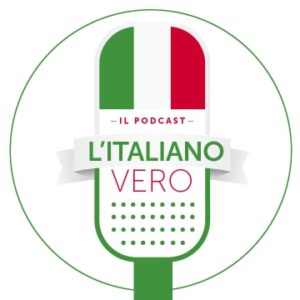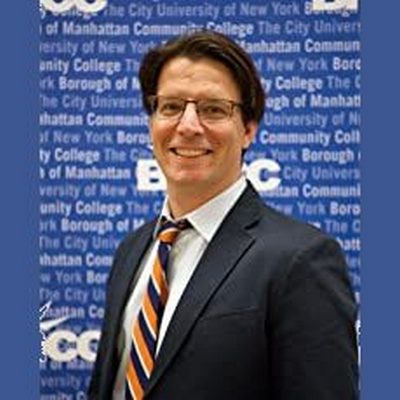47 – A lezione dal prof. Tom Means

Blog in italiano – tempo di lettura: 5 min
Blog in English – reading time: 5 min
________________
Blog in italiano
Ciao a tutti,
per questo episodio, cari amici, non abbiamo dovuto cercare un ospite mai visto, perché è stato proprio il nostro ospite a trovare noi!
Che dite…stiamo diventando famosi? Siamo davvero orgogliosi di presentarvi il Prof. John Tom Means, professore associato di lingue moderne presso la City University of New York, che ha ascoltato il nostro podcast, gli è piaciuto e ha deciso di mettersi in contatto con noi!
Vi ricordate il cartone animato nato alla fine degli anni 60 “La corsa più pazza del mondo” (Wacky races)? Ecco, noi ci sentiamo un pò come il cane Muttley che diceva “medaglia medaglia medaglia”! Perchè l’ospite di oggi è per noi davvero una bella medaglia sul nostro medagliere!
Ma veniamo a Tom, ha al suo attivo davvero molte medaglie: da 11 anni insegna lingua italiana, cultura italiana e cinema italiano! È coordinatore presso la sua università del programma di italiano, che per numero di iscritti è il secondo degli Stati Uniti, con ben 1200 studenti all’anno. Chissà magari alcuni di voi sono stati suoi allievi!
Anche Tom ci conferma che l’italiano è molto amato, anche negli Stati Uniti: molti studenti, dovendo scegliere una lingua straniera da studiare obbligatoriamente per due semestri, scelgono di studiare l’italiano!
La storia di Tom è molto bella, ci racconta di essere italo-americano e che la sua nonna, di origini siciliane, gli ha insegnato le sue prime parole in italiano: “Mangia!” e “Aspetta!”.
Davvero una italiana vera la nonna di Tom: l’imperativo “Mangia” credo sia la frase più pronunciata dalle madri italiane! Ed anche l’imperativo “aspetta!” rappresenta bene l’indole tranquilla e godereccia che, soprattutto al sud, invita a non affannarsi troppo ma a prendere le cose con calma, perchè c’è sempre tempo per mettersi al lavoro!
Da allora, Tom si è innamorato dell’italiano, a 17 anni è venuto in Italia in gita scolastica e ha colto subito la caratteristica che hanno le lingue di farci entrare in comunicazione con altre culture. Da allora, a distanza di 15 anni, è diventato linguista applicato… Aveva l’italiano nel suo destino!
Cubo chiede come approcciarsi alla grammatica, Tom afferma che le ricerche sull’acquisizione di una seconda lingua, confermano che è meglio curare prima la fluency e solo dopo l’accuratezza, il metodo che usa Tom con i suoi studenti si chiama task-based language learning.
Ecco un bell’esempio di come Tom mette in pratica questo metodo in classe: già nelle prime settimane assegna ai suoi studenti il compito di presentare la famiglia di un proprio compagno, da quel momento e per i successivi incontri, Tom dà molti generi di input legati al compito da svolgere: dimostrazioni, filmati, letture sulla presentazione di un parente. E’ la fase in cui si impara davvero la lingua, grazie alla presentazione ripetuta e diversificata di esempi, di vocaboli e di testi simili a quello richiesto. Poi segue la presentazione che, al di là della correttezza, dà certamente una grande soddisfazione agli studenti che si accorgono così di riuscire a comunicare! Dopo la presentazione delle performances, gli studenti hanno “vissuto” la lingua, ne hanno fatto esperienza diretta, e Tom inizia a presentare anche la grammatica (per esempio, in questo caso, gli aggettivi possessivi o i vocaboli della famiglia).
Connection not perfectionⓇ! Ormai è anche il nostro motto!
Tom ha anche pubblicato diversi libri (in ben cinque lingue: italiano, francese, spagnolo, portoghese e inglese) in cui presenta un metodo geniale per imparare facilmente moltissimi vocaboli: il libro identifica i 24 modelli più comuni di terminazione di parola (suffissi) tra due lingue e fornisce più di 4000 parole che li seguono.
L’anello di congiunzione è l’inglese e i 24 suffissi servono da ponte tra l’inglese e la seconda lingua.
Facciamo un esempio: quasi ogni parola che in italiano termina con –tà (possibilità, qualità, opportunità), in inglese termina con -ty (possibility, quality, opportunity); oppure parole che in inglese terminano in -ance (alliance) in italiano hanno -anza (alleanza); e ancora, molte parole inglesi che terminano in -al (normal, capital) in italiano hanno -ale (normale, capitale).
E’ un metodo utile anche per coloro che parlano, come prima lingua, una lingua diversa dall’inglese (nel caso in cui comunque lo conoscano): un russo che vuole imparare l’italiano, troverà comunque più facile memorizzare i vocaboli italiani attraverso questo metodo usando l’inglese come lingua ponte, che non direttamente dal russo all’italiano.
Studiando e memorizzando queste poche regole, impariamo un automatismo che ci permette di disporre di un vocabolario di migliaia di parole!
Insomma: minimo sforzo, massima resa!
Questi modelli esistevano già, ma nessuno sembrava averne compreso l’importanza fino a quando Tom, quasi vent’anni fa, cercando qualche pubblicazione al riguardo, si è reso conto che non ne esistevano e così ha scritto e pubblicato per primo il suo “Instant Italian Vocabulary Builder with Online Audio”, oggi ristampato nella nuova versione con le registrazioni disponibili on line.
Ed è anche un grande incoraggiamento a studiare, a buttarsi, a tentare di usare parole nuove, non credete?
Tom afferma che i due elementi fondamentali per imparare una lingua sono l’input e l’interazione, attraverso le quattro modalità: parlare, scrivere, ascoltare, leggere.
Basta trovare input interessanti e interagire con essi, infatti non interagiamo solo attraverso la conversazione, ma ogni volta che rileggiamo un libro, che sottolineiamo una frase, che rivediamo una scena di un film per meglio comprenderla!
Quindi, anche se è importante il contesto, a seconda che chi vuole imparare l’italiano viva in Italia o all’estero, è comunque possibile anche se con uno sforzo maggiore, trovare input e interazione anche vivendo all’estero.
Concludiamo rivolgendoci a tutti voi ascoltatori per consigliarvi l’acquisto del libro di Tom che, in occasione dell’intervista con il nostro podcast e in esclusiva per gli ascoltatori dell’italiano vero, per le prossime tre settimane sarà in vendita a metà prezzo! Non è necessario alcun coupon, è sufficiente accedere da qui. (L’editore offre tutte le tracce audio sul sito, senza necessità di password).
È comunque anche sempre disponibile su Amazon a prezzo intero:
- Link Amazon Brasile
- Link Amazon Italia
- e tutti i siti Amazon
- link editore scontato del 50%
In ultimo vi suggeriamo anche il canale Youtube di Tom dove ha pubblicato una trentina di video molto istruttivi sull’insegnamento/apprendimento delle lingue.
Ci sentiamo presto!
Baci!
►Prova la trascrizione singola episodio
https://payhip.com/b/Pi1n
►Prova ad ascoltarci con trascrizioni e sottotitoli:
https://www.litalianovero.it/wp/trascrizioni-episodi/
Se le provi migliori e ci sostieni.💪
►Ti piace il nostro podcast? Per favore sostienici al costo di un caffè perché
senza di voi non ci sarebbe il podcast:
https://www.patreon.com/litalianoveropodcast
________________
Blog in English
For this episode, dear friends, we didn’t have to look for a new guest, because our guest found us!
What do you think … are we becoming famous? We are very proud to introduce Professor Tom Means, Associate Professor of Modern Languages at City University of New York, who listened to our podcast, liked it, and decided to get in touch with us!
Do you remember the cartoon from the late 60’s, “La corsa più pazza del mondo” (Wacky Races)? We feel a bit like Muttley, the dog, who said “medal, medal, medal!” because today’s guest is really a great medal for us on our trophy table!
But let’s get back to Tom, he really has many accomplishments: for 11 years he has been teaching the Italian language, Italian culture and Italian cinema! He is the coordinator of the Italian program at his university, which is the second largest in the United States in terms of number of students, with 1200 students per year. Who knows maybe some of you were his students?
Tom also confirms that Italian is very popular, even in the United States: many students who have to choose a foreign language to study for two semesters, choose to study Italian!
Tom’s story is very beautiful, he tells us that he is Italian-American and that his grandmother, of Sicilian origins, taught him his first words in Italian: “Mangia” (Eat!) and “Aspetta” (Wait!”).
Tom’s grandmother is certainly a true Italian: I think the imperative “Mangia” (Eat!) is the most pronounced phrase by Italian mothers! And the imperative “Aspetta” (Wait!”) represents the calm and enjoyable nature that, especially in the south, that teaches you not to get too busy but to take things slowly, because there is always time to work!
Since then, Tom has fallen in love with Italian, at the age of 17 he came to Italy on a school trip and immediately grasped the characteristics that languages have of making us enter into communication with other cultures. Fifteen years later, he has become an applied linguist — he had Italian in his destiny!
Cubo asks how to approach grammar; Tom says that research on the acquisition of a second language confirms that it is better to acquire fluency first and only after some fluency begin grammar. The method that Tom uses with his students is called task-based language learning.
Here is a good example of how Tom puts this method into practice in the classroom: in the first weeks he assigns his students the task of introducing the families of their classmates to each other. From that moment and for subsequent meetings, Tom gives many kinds of input related to the task to be performed: demonstrations, films, lectures on the presentation of a relative. It is in this phase in which you really learn the language, thanks to the repeated and diversified examples, words and texts similar to the one requested. After that, follows the students presentations which certainly give great satisfaction to the students who realize that they are able to communicate! After the presentations, the students have “lived” the language. They have had direct experience of it, and Tom begins to present the grammar as well, for example, in this case, the possessive adjectives or the vocabulary for the family.
Connection not perfectionⓇ! It is now also our motto!
Tom has also published several books (in five languages: Italian, French, Spanish, Portuguese and English) in which he presents a brilliant method to easily learn many words: the book identifies the 24 most common patterns of word derivations such as suffixes between two languages and provides more than 4000 words that are related to them.
The connecting link is English and the 24-word patterns serve as a bridge between English and the second language.
For example: most words in Italian that ends with –tà (possibilità, qualità, opportunità) show possibility, quality, or opportunity, in English most words that end with –ty show possibility, quality, or opportunity; or words ending in -ance in English show alliance and in Italian words ending in -anza show alliance; also, many English words ending in -al (normal, capital) in Italian have -ale for their ending (normale, capitale).
It is also a useful method for those who speak a language other than English as their first language (in case they know it anyway): a Russian who wants to learn Italian will still find it easier to memorize Italian words through this method using English as a bridge language, so not directly from Russian into Italian.
By studying and memorizing these few rules, we learn through automatism, and it allows us to have a vocabulary of thousands of words!
In short: minimum effort, maximum yield!
These models already existed, but no one seemed to have understood their importance until Tom. Almost twenty years ago, looking for some publications on the subject, he realized that they did not exist so he wrote and published his “Instant Italian Vocabulary Builder with Online Audio”, reissued today in the new version with the recordings available online.
And it is also great encouragement to study, to immerse yourself, and to try to use new words, don’t you think?
Tom states that the two fundamental elements for learning a language are input and interaction, through the four modes: speaking, writing, listening, reading.
It is satisfactory to find interesting inputs and interact with them, however we do not interact only through conversation, but every time we reread a book, we underline a sentence, or we review a scene from a film to better understand it!
So, even if the context is important, depending on whether those who want to learn Italian live in Italy or abroad, it is still possible, with greater effort, to find input and interaction even while living abroad.
We conclude by telling all our listeners that we advise you to purchase Tom’s book which, on the occasion of the interview with our podcast and exclusively for listeners of l’italiano vero, will be on sale for the next three weeks at half price! No coupon is needed, just log in from here. (The publisher offers all the audio tracks on the site, without a password).
However, it is also always available on Amazon at full price:
- Amazon Brasil
- Amazon Italy
- and Amazon websites all over the world
- publisher 50% off
Finally, we also suggest Tom’s YouTube channel where he has published about thirty very informative videos on language teaching and learning.
Talk to you soon!
Kisses! by Sara
Translated by Linda🎙🇮🇹 🇺🇸
►Try listening to us with transcripts and subtitles:
https://www.litalianovero.it/wp/trascrizioni-episodi/
If you try them you improve and support us.💪
►Do you like the podcast? Please support us at the cost of a coffee
without you there would be no podcast:
https://www.patreon.com/litalianoveropodcast
►Try the transcript of the single episode
https://payhip.com/b/Pi1n

Tom Means, Ph. D.
L'Italiano Vero è un progetto libero finanziato dagli ascoltatori e dalle ascoltatrici.
- 10 – Le dritte per lavorare in Italia – parte 1
 Settembre 9, 2019
Settembre 9, 2019 24 min
24 min - 09 – Dal parrucchiere
 Luglio 29, 2019
Luglio 29, 2019 13 min
13 min - 08 – Il caffè al bar
 Luglio 15, 2019
Luglio 15, 2019 24 min
24 min - 07 – Ma intendi questo… o il prossimo??
 Luglio 1, 2019
Luglio 1, 2019 15 min
15 min - EPISODIO 06 – Caratteri speciali parte 2
 Giugno 17, 2019
Giugno 17, 2019 21 min
21 min - EPISODIO 05 – Caratteri speciali parte 1
 Maggio 30, 2019
Maggio 30, 2019 29 min
29 min - EPISODIO 04 Facciamo le presentazioni parte 2 – Paolo
 Maggio 9, 2019
Maggio 9, 2019 21 min
21 min - EPISODIO 03 – Spelling parte seconda e..”Sanremo”
 Aprile 30, 2019
Aprile 30, 2019 28 min
28 min - EPISODIO 02 – In bocca al Lupo
 Aprile 17, 2019
Aprile 17, 2019 15 min
15 min - EPISODIO 01 – Facciamo le presentazioni parte prima (il Cubo)
 Aprile 10, 2019
Aprile 10, 2019 24 min
24 min - 00 – Parliamo del più e del meno
 Aprile 3, 2019
Aprile 3, 2019 24 min
24 min
- 20 – Il latino vero con Michela – parte 2
 Gennaio 26, 2020
Gennaio 26, 2020 21 min
21 min - 19 – Il latino vero con Michela – parte 1
 Gennaio 12, 2020
Gennaio 12, 2020 20 min
20 min - 18 – Parenti serpenti?
 Dicembre 29, 2019
Dicembre 29, 2019 24 min
24 min - 17 – Italiani veri a Firenze
 Dicembre 15, 2019
Dicembre 15, 2019 21 min
21 min - 16 – Niente di niente
 Dicembre 1, 2019
Dicembre 1, 2019 12 min
12 min - 15 – La dolce vita con Linda
 Novembre 17, 2019
Novembre 17, 2019 min
min - 14 – Un Pinco Pallino qualsiasi
 Novembre 3, 2019
Novembre 3, 2019 20 min
20 min - 13 – L’avvocato del diavolo
 Ottobre 20, 2019
Ottobre 20, 2019 14 min
14 min - 12 – L’uomo del tempo
 Ottobre 7, 2019
Ottobre 7, 2019 9 min
9 min - 11 – Le dritte per lavorare in Italia – parte 2
 Settembre 23, 2019
Settembre 23, 2019 33 min
33 min
- Gli otto Re di Roma con Marco Cappelli – episodio bonus
 Gennaio 9, 2024
Gennaio 9, 2024 6 min
6 min - Flash! 009 Ed è Gol con Antonino Palumbo
 Dicembre 2, 2022
Dicembre 2, 2022 31 min
31 min - Flash! 008 Faccia da funerale
 Ottobre 8, 2022
Ottobre 8, 2022 18 min
18 min - 1 2 3… Grazie Patrons!
 Dicembre 25, 2021
Dicembre 25, 2021 1 min
1 min - Flash! 007 Le vacanze degli Italiani Veri
 Settembre 18, 2021
Settembre 18, 2021 21 min
21 min - Flash! 006 Paolo medaglia di legno
 Agosto 14, 2021
Agosto 14, 2021 17 min
17 min - Flash – C’è da spostare una macchina
 Maggio 4, 2020
Maggio 4, 2020 32 min
32 min - Flash – Italiani veri a Bergamo
 Aprile 12, 2020
Aprile 12, 2020 41 min
41 min - Flash! 003 la mia dolce metà
 Agosto 26, 2019
Agosto 26, 2019 18 min
18 min - Flash! 002 nel traffico
 Agosto 12, 2019
Agosto 12, 2019 11 min
11 min - Flash! Italiani veri a Roma
 Giugno 5, 2019
Giugno 5, 2019 9 min
9 min







Leave a Comment